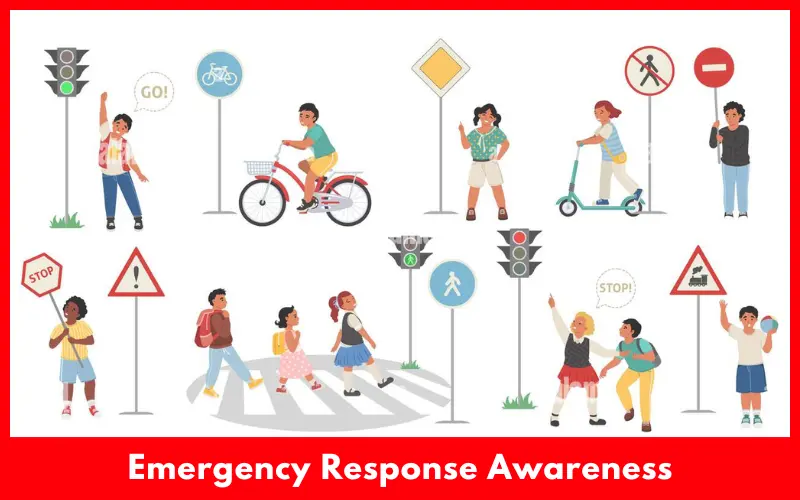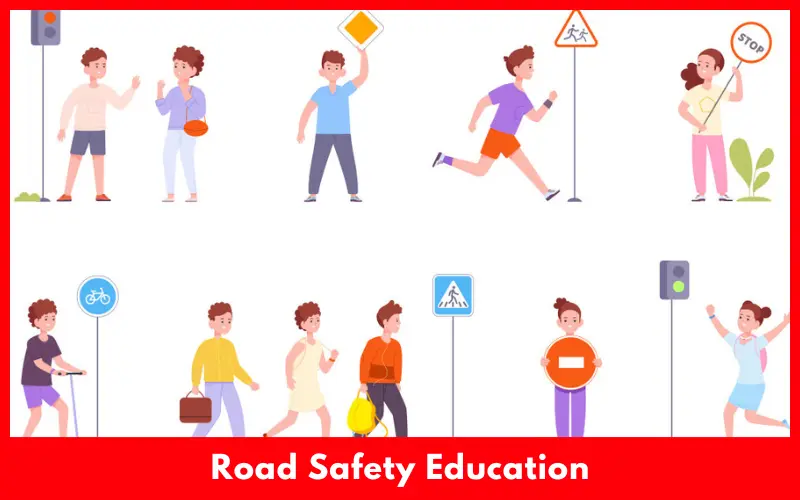Road safety is an important worldwide issue. The increasing number of traffic accidents and deaths is growing day by day, affecting each one of us in one way or the other.
Road safety education is one of the methods which is being considered towards improving traffic safety in educating each individual on the best practises to be adopted to ensure safety while using the roads. With proper education, individual knowledge, skills and attitudes towards mitigating and reducing road accidents is guaranteed helping to save lives.
Article Summary
Top 7 Reasons Why Road Safety Education is Important
This article tells about how it may reduce accidents and fatalities, make more people aware of informed emergency response , protect elderly and unmarried group more, make more people appreciate driving responsibility and community more mutual cooperation, cultivate more people lifelong expensive of driving at an early stage and make more people follow or be aware of the sign of traffic law and safety rule.
Submissively understand how growth of speed of road education may make our road goes more safely, reduces casualty rate of traffic – injuries.
Reduces Accidents and Fatalities
Road safety education helps to reduce the number of accident as it will educate people about traffic rules, best practices, and the safety of pedestrian on the road.
According to the study by the World Health Organisation, some countries with effective road safety education program have a lower road-related death and injury rates.
Education leads people to make better, safer porriefuli19 choices on the road, which in turn reduces accidents. As an example, we can start by teaching drivers basics like following the other car on the two-metre distance, avoiding unsafe behaviours like texting or phone use, driving defensively in all the conditions, etc.
All these actions help to reduce rear-end collisions, different types of road accidents and ultimately improve overall safety for all the road users. The same principle goes for education of pedestrians, namely those who want to learn how to walk on the road, use crosswalk and cross the roads to get to somewhere.
Improves Emergency Response Awareness
Road safety education may involve training in procedures to follow in an emergency. For instance, how to call for help, carry out basic first-aid, deal with vehicle recovery and accident-situations. Aside from the obvious benefits to road victims of doctors arriving sooner and police conducting a credible accident investigation, such training has two further advantages:
It ensures that there are people on hand who are fully equipped to deal with emergencies without any loss of lives and with minimal further injuries.
It teaches people how to communicate effectively; this may seem unrelated to any aspect of road safety, so why should this feature of road safety education be mentioned here?

The answer concerns what to do in the moment between the accident and the arrival of an ambulance: by knowing how to communicate effectively and clearly with an emergency service the victim and any other witnesses can pass on important details about the accident etc to help the call-handlers respond more effectively.
When people understand general causes of risk, such as slick roads, blind spots and dangerous intersections, they can foresee accidents and prepare in advance to prevent them from occurring. With this increased awareness, emergency services are rendered either less needed or not necessary.
Promotes Legal Compliance
Another main part of this is so people buy what legal laws federal and local states require them to get educated with the law so that it leaves no room for but they don’t confirm. For instance in road safety education it leaves no room for remorse towards bystanders.
It makes you understand traffic laws and regulations such as Laws regulating the use of automobiles, bikes and other vehicle in the road, rights of ways and how to prevent lots and lots of people from dying when using pedestrian radius and other virtues related to driving
Road safety education can also act to proactively prevent deviant behaviour and supplement the rule of law. The more people are aware of and adhere to rules of the road, the more likely they are to report non-compliance to authorities.
This encourages enforcement of traffic laws and potential rule-breaking behaviour. Voluntary adherence to traffic laws also serves to enhance general adherence to the rule of law, five other avenues for civic virtue.
Additionally, knowing the duration of the statute of limitations for certain traffic violations encourages timely reporting and helps address legal deviance in a timely manner so that road safety can be effectively ensured.
Protects Vulnerable Groups
Roads are dangerous for children, pedestrians, cyclist and old people. Education can take the best steps to prevent children to be slaughtered or other people to be victims of accidents before driving a car.
For example, telling our children to pass the pedestrian sideways when they want to cross on the traffic securing the opposing traffic, looking both ways and in particular before crossing the street are all informations that can help them preventing to be crushed by a vehicle.
Teenage drivers, especially those just learning, are more likely than older and more experienced drivers to get into accidents, sometimes caused by their incautious or reckless behaviour behind the wheel, such as speeding or using a mobile phone while driving.
Road safety education for teenagers is about not only learning how to drive sensibly and practicably, but also about the consequences of dangerous driving habits, such as breaking the laws of the road, the dangers of driving under the influence of alcohol or drugs, the importance of learning defensive driving skills, and so on.
Similarly, we can reduce the risk of injury to elderly pedestrians by teaching them to use the sidewalk, avoid jaywalking, and look both ways. Cyclists can be taught to avoid riding on roads without bike lanes and to wear helmets to reduce serious injuries.
Encourages Responsible Driving
Education for responsible road behaviour may include teaching them about the consequences of speeding and other dangerous driving behaviours, including distracted driving and driving under the influence.
For instance, by teaching them about the dangers of speeding and forbidding it and teaching them about drinking and driving, this should foster the use of responsible driving behaviours among drivers.
Legislation could give greater protection to vulnerable road users. Education for responsible road behaviour may include focusing on the importance of obeying traffic laws, including following traffic signals, maintaining speed limits and showing courtesy to other road users.
It may also include education about road rules and traffic laws for all road users (i.e., not just for drivers enquiring how to drive around a cyclist but also for the cyclist on the road).
Creates a Safer Community
Every day, we experience road accidents and unfortunate incidents on the road. When we work together as a community towards road safety, it will become a safer place for us all. By educating each other in the importance of road safety, we can create a shared community commitment to road safety.
This may include organising neighbourhood events to publicise road traffic safety, supporting local road safety efforts, and advocating for infrastructure and enforcement improvements.
For example, an adopt-a-child road may organise a walk-a-thon to raise funds for a road safety education programme; in 2013, over 90 communities in 45 states participated in ‘Walk This Way’, an effort sponsored by FedEx and Safe Kids Worldwide to provide family events and improve pedestrian safety in high-risk communities.
Promotes Lifelong Habits
Road safety education helps children to adopt good practices from an early age such as wearing a seatbelt, following traffic lights and stop signs, and always looking both ways before crossing the road.
These good habits can last a lifetime. By imparting road safety practices to children as early as possible, we can impart the building blocks of proper road safety behaviours that children can carry with them into adulthood.
These behaviours can further help to reduce accidents and injuries that sometimes come with driving older vehicles. For example, if a child is used to wearing a seatbelt at all times, then she is less likely to suffer an injury in the event of a car accident.
Endnote
To conclude, road safety education is considered as very vital for safer road and pedestrian.
Reducing the risk of accidents and fatalities are the longterm effects of having Proper education on how dangerous it is to use road carelessly. Besides, Increasing awareness on emergency departments actions and fast response in order help people in critical cases.
Legal compliance also have a key role, It is a moral obligation towards safety of pedestrian and car drivers.
Hence, The education and awareness are critical for particularly vulnerable groups, avoiding potential accidents and helping people to use roads mindfully. Similarly, parents are responsible for teaching their children, car drivers and cyclists, how to use road safely and responsibly. These are the foundations for a safer community.
Finally, agreeing on the fact that road safety education is important to inculcate life-long healthy behaviors, especially on how to use roads without causing damages or endangering others.
In short, apart from depriving the families of potentially avoidable tragedies, good, no-nonsense road safety education and a knowledge-based safety culture looks set to benefit pretty much all of us who make use of the road.
However, it appears to me that doing a good job of teaching about passing an exam is not something our education system has much experience of. This is why you have to do the one thing that you have been put on this planet to do. Learn as much as you possibly can about something before taking it onto the roads.

